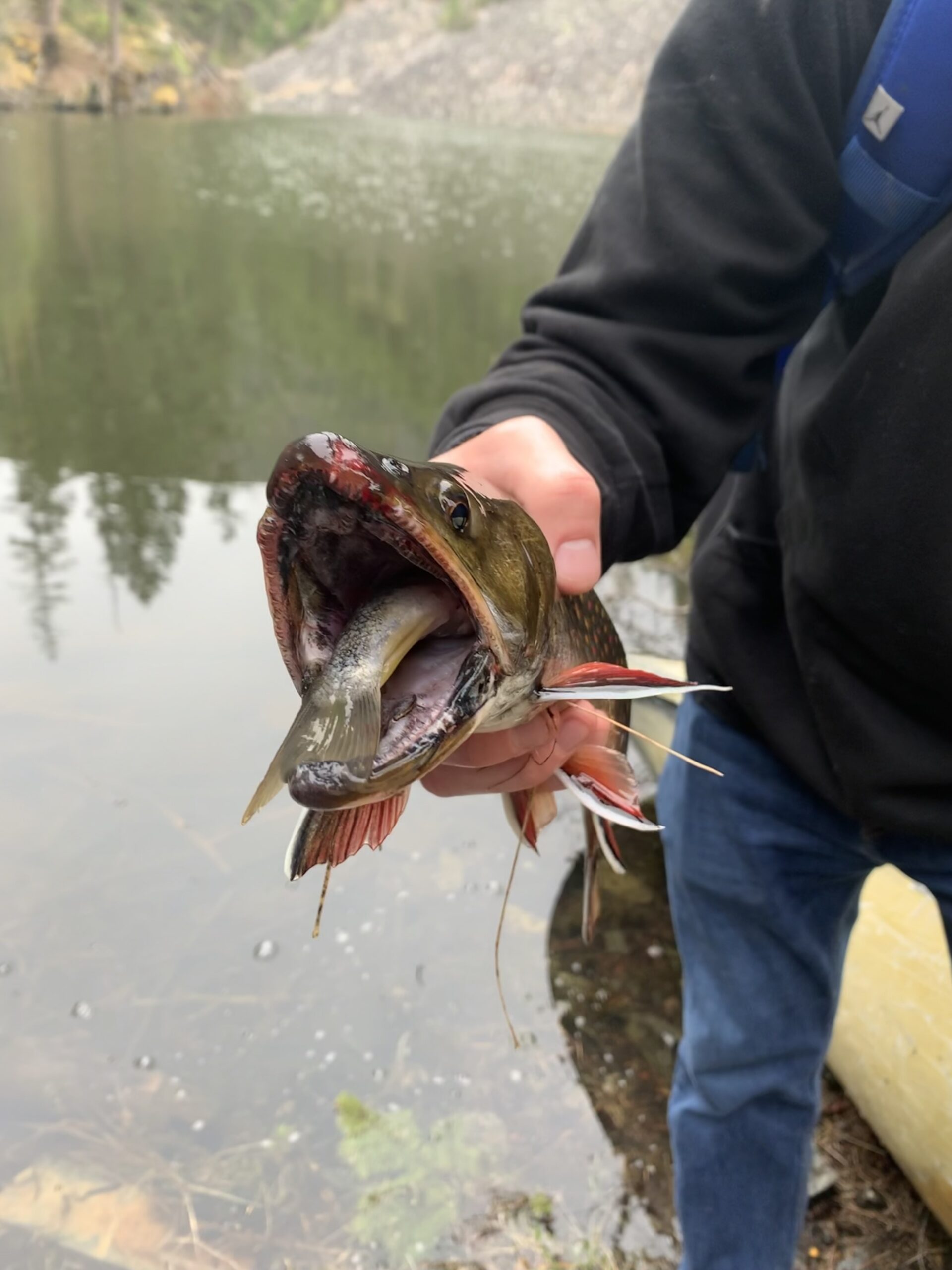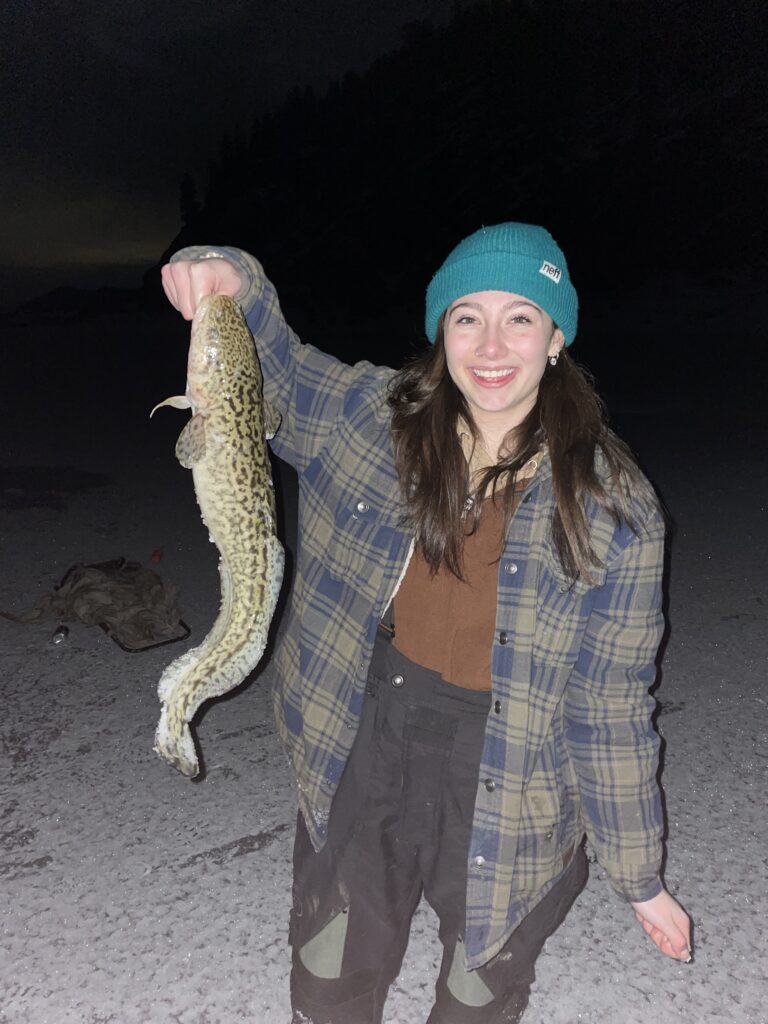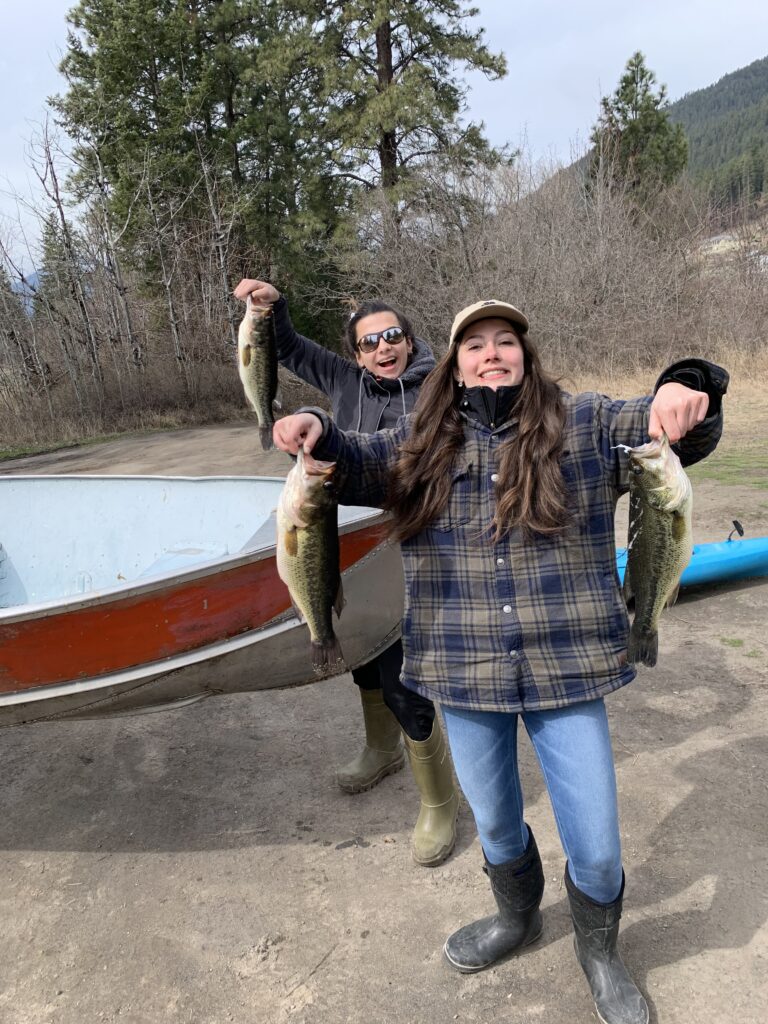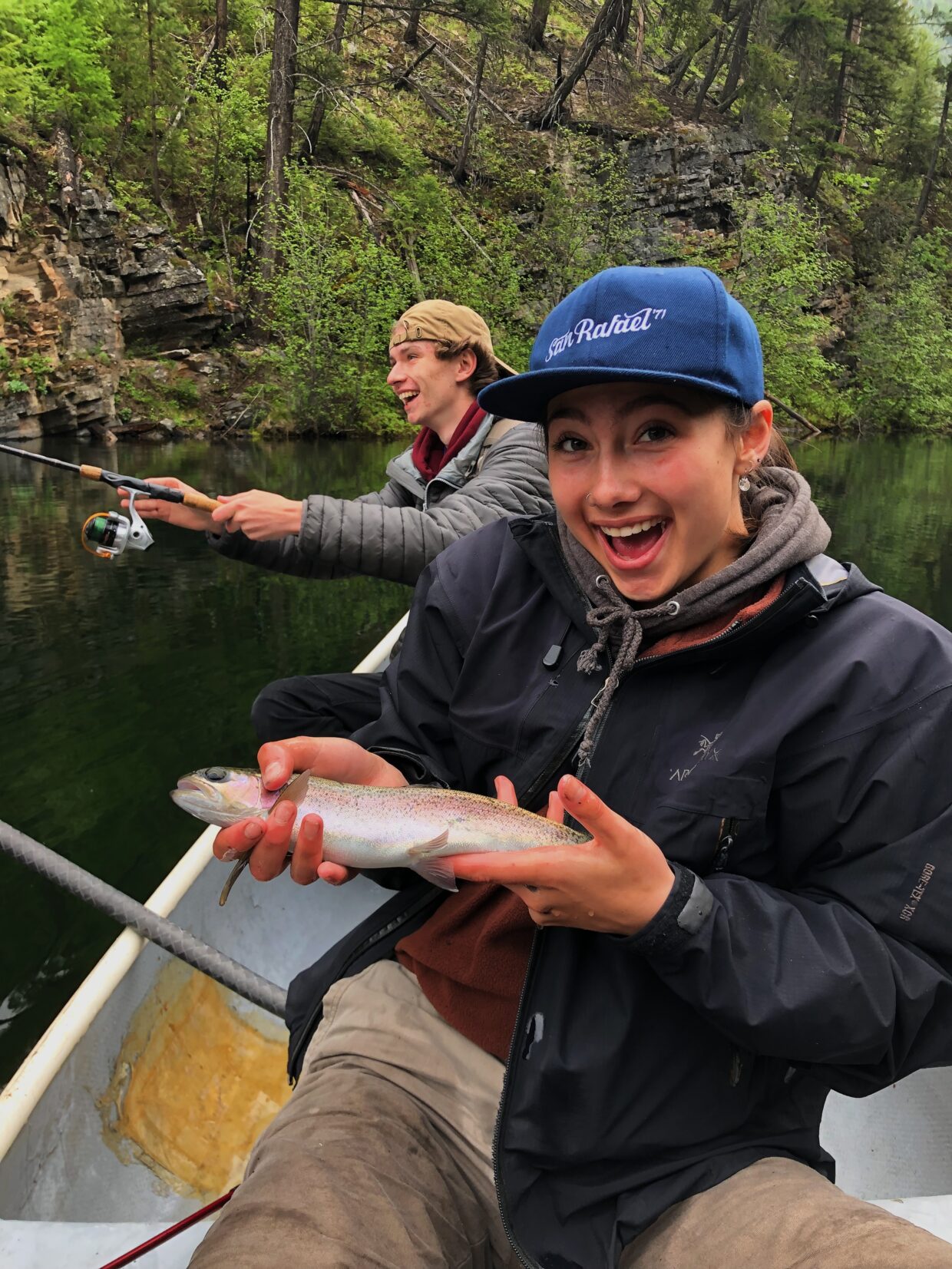
Fish Species & Habitats
In this weeks section I will show you examples of different types of fish, that we are able to fish in the Kootenays. By determining the types of fish you desire to catch you can do your own research or exploring to find a lake you will love to fish! We will also talk about what habitats/ environments you are able to find these fish.
Fish Species: Throughout the Kootenays we have a large variety of fish species. There is also a high rising problem of non-native species becoming introduced, which can kill lakes. Ensure when fishing any lake to check what species are non-native species to the area. According to kootenay-lake.ca “Twenty-two species are found in Kootenay Lake: one sturgeon, five minnows, two suckers, ten salmonids (three of which were introduced), one cod, and three sculpins. The first is the white sturgeon. The minnows are: lake chub, peamouth, northern pikeminnow (northern squawfish), longnose dace, redside shiner. The suckers are: longnose sucker, largescale sucker. The salmonids are: western cutthroat trout, rainbow trout (steelhead), sockeye salmon (kokanee), brown trout (introduced), bull trout, brook trout, lake trout (introduced), lake whitefish (introduced), pygmy whitefish, mountain whitefish. The cod is the burbot. The sculpins are: prickly sculpin, slimy sculpin, torrent sculpin”. In todays post I will go over a couple of these species that I enjoy catching! Not only are these found just within Kootenay Lake but also found throughout the region of the Kootenays. These fish are what keep their environments thriving, so always keep into account that even while fishing they are animals just as we are, and earth is dependant on everyone. Here are some photos of me and friends with different species of fish!

This is a Burbot also known as a lake Lingcod. These fish live most of their life in the deep depths of lakes and are bottom feeding fish. Burbot commonly move to shallower depths during the night to find their prey, and as winter nears its end around February they begin getting ready to meet their mates. These fish are commonly known for using their senses to find their prey, as their sight is not amazing. The barbs and glands on their faces help them navigate, and sense movement within the water. Therefore, the fish are caught with lots of movement on the bottom of a lake.
Characteristics:
“Burbot is not easily mistaken for any other native freshwater fish in B.C. Its prominent single chin barbel, or “feeler,” is its most defining characteristic; no other native species has one. It has an elongated, eel-like body with both dorsal and anal fins extending from midway on the body to the tail. The pelvic fins are placed in front of the pectoral fins beneath the gill cover. The skin has a variable, mottled brown-olive-gold colouration” – gofishbc.comhttps://www.gofishbc.com/news/education/burbot-bc-freshwater-cod/.
Bonus: These fish are commonly tagged by BC Fisheries, if you find a tag on your Burbot make sure to call the number on the back. There is a reward for reporting the weight and location you have caught this fish!


This is a Cutthroat Trout. These fish live most of their lives in clean cold creeks, rivers, and lakes. These fish are unbelievable fish to catch and put up a great fight, therefore, why this species is targeted across the Kootenays for fly fisherman. Cutthroat spawn in the late spring and can go as late as July. During the spawn these fish turn gorgeous colours, as you can determine in the picture to the left. These fish can be prey as Bull trout eat them often, this fish are loved by fly fisherman and
Characteristics:
“Cutthroat Trout have small irregular-shaped spots along their back, dorsal, and caudal fins. Few spots occur below the lateral line on the anterior of the body. Adults typically exhibit bright yellow, orange, and/or red colours along the ventral area, especially among males during the spawning season” – env.gov.ba.cahttps://www.env.gov.bc.ca/wld/frpa/iwms/documents/Fish/f_westslopecutthroattrout.pdf. The main determining factor I often notice is the bright pink/orange colour near the gills of the fish, often you can catch cutthroat that look like rainbow trout until you see this determining factor.

This is a Bull Trout. These fish have a large variety of habitat from clean cold creeks, and rivers to lakes and reservoirs. These fish are desired by many and are an absolute thrill to catch. Bull trout are often the largest fish you are able to catch in the Kootenays, therefore, they are a target species for many fisherman. As these fish move toward their spawning time around early July to mid August these fish turn to a gorgeous coral orange colour that is unforgettable. (Look to the photo on your left for reference of this gorgeous coral colour).
Characteristics:
“There are several characteristics of the char family that are unique relative to other trout, including the light spots on a dark body (unlike rainbow trout or cutthroat, which have dark spots on a light body), cream-white leading edges on the lower fins, and teeth on the roof of the mouth (also called a “vomer”), which are used to grip larger prey” – gofishbc.comhttps://www.gofishbc.com/learn/fishing-tips/river-fishing/fly-fishing-for-bull-trout-in-bc-interior-and-kootenays/.

This is a Rainbow Trout. These fish are quite common within the Kootenays, and there are a great variety of different species of rainbow trout. These fish have a large variety of habitat from clean cold creeks, and rivers to lakes and reservoirs. You can also find these fish in the ocean in certain areas! These fish are quite common, and great fighting fish!
Characteristics: “General characteristics of rainbow trout are small spots across the dorsal portion of the fish. Most spots are above the lateral line, but some fish can have spots below the lateral line as well, mostly around the posterior region of the fish. Spots are also found across the entire tail, which is not forked or slightly forked. Pink colour is often present on the gill plates as well as along the lateral line”- fishingwithrod.com. https://www.fishingwithrod.com/fish_profile/rainbow_trout.html

This is a Brooke Trout. These fish are commonly found in creeks, rivers, and lakes. These fish are stunning in colour, and and fun to catch. I enjoy as they get bigger in size as their colours really pop and they become increasingly more beautiful.
Characteristics: “Typically, they have olive-green to dark brown backs, with lighter colouring on the sides that becomes white on the bottom. Characteristic marble-like patterns are present on the head and back, with thick, black, wavy lines on the dorsal fin. Pale spots, and small discrete red spots surrounded by blue halos, are present along the sides of the body. Anal, pelvic, and pectoral fins have white leading edges followed by black pigment and reddish colouration. Their colour becomes more intense at spawning time, with males turning fiery orange-red on the belly”- gofishbc.com. https://www.gofishbc.com/learn/stocked-strains/eastern-brook-trout/#:~:text=Description%3A%20Eastern%20brook%20trout%20have,becomes%20white%20on%20the%20bottom.

This is a Largemouth Bass. These fish are often found in swampy lakes with many weeds, or shallow lakes. Bass are an extremely fun fish to catch, sometimes you are oblivious then the fish hits the fishing line like a truck. These fish fight hard, and if you are new they might bury your hook int the weeds before you see them. I don’t often get the opportunity to fish Bass but they sure are one of my favourites!
Characteristics: “Largemouth bass have two dorsal fins that are joined together. The dorsal, caudal, and tail fins are semi-opaque and green, while the pectoral fins are amber and clear. The overall colouration of the fish varies depending on habitat – fish that live in clear water tend to be darker, while those living in murky water tend to be lighter”- bcinvasives.ca. https://bcinvasives.ca/invasives/largemouth-bass/

This is a Sucker Fish. You will often catch these fish when bottom fishing , or fishing with a bobber and worm close to the bottom. These fish are scavengers and you can buy fish like them to clean your fish tanks to eat poop and algae. These fish are the cleaners of the environment.
Characteristics: “The most distinct feature of a largescale sucker is its mouth, which is located on the bottom of its head rather than the front. Like its cousins in the minnow family, it does not have an adipose fin. Its scales are carp-like, they are fairly large. The top side of the fish is often greenish-grey in colour, while its belly is usually white or creamy. A largescale sucker can reach just over half a meter long”- fishingwithrod.com. https://www.fishingwithrod.com/fish_profile/largescale_sucker.html
Here are some bonus release videos, that are pretty sweet!
